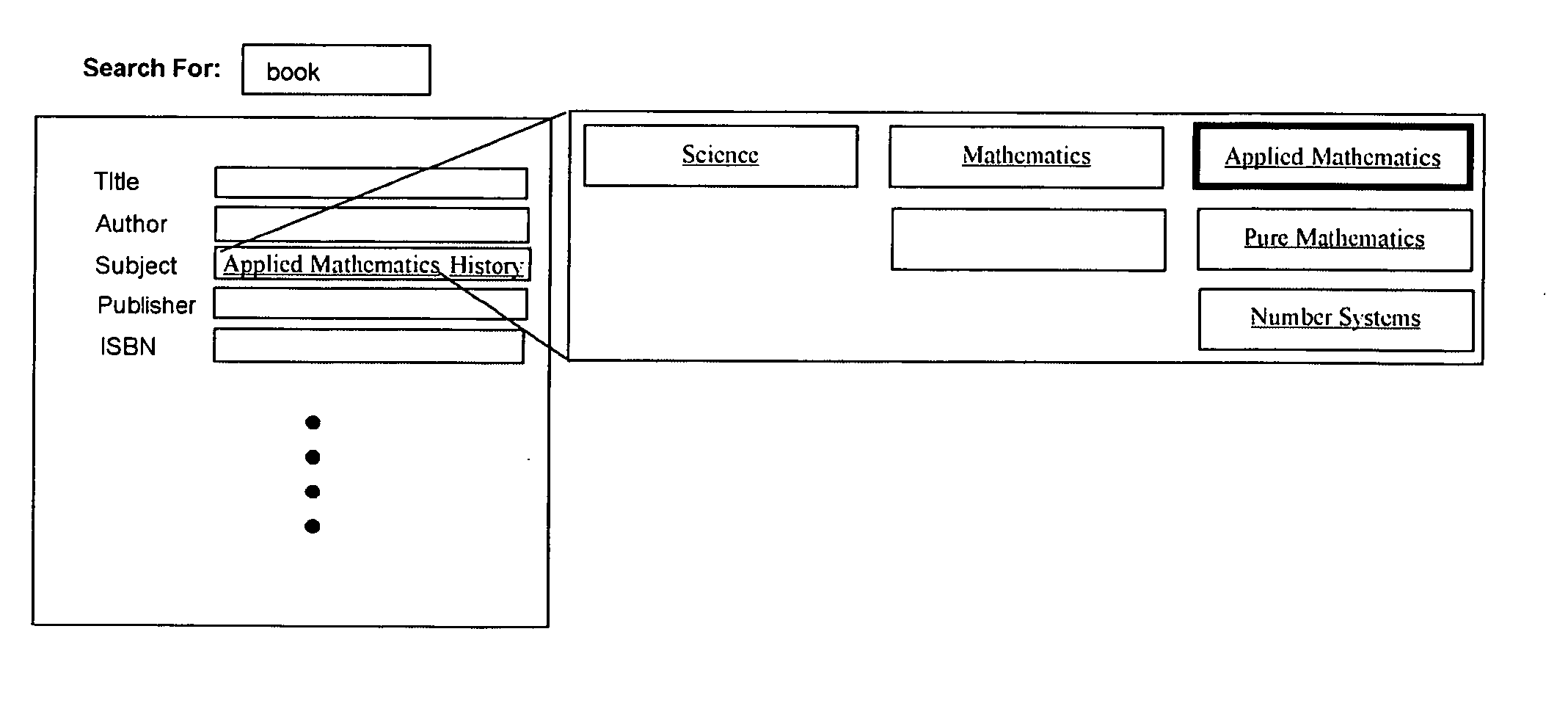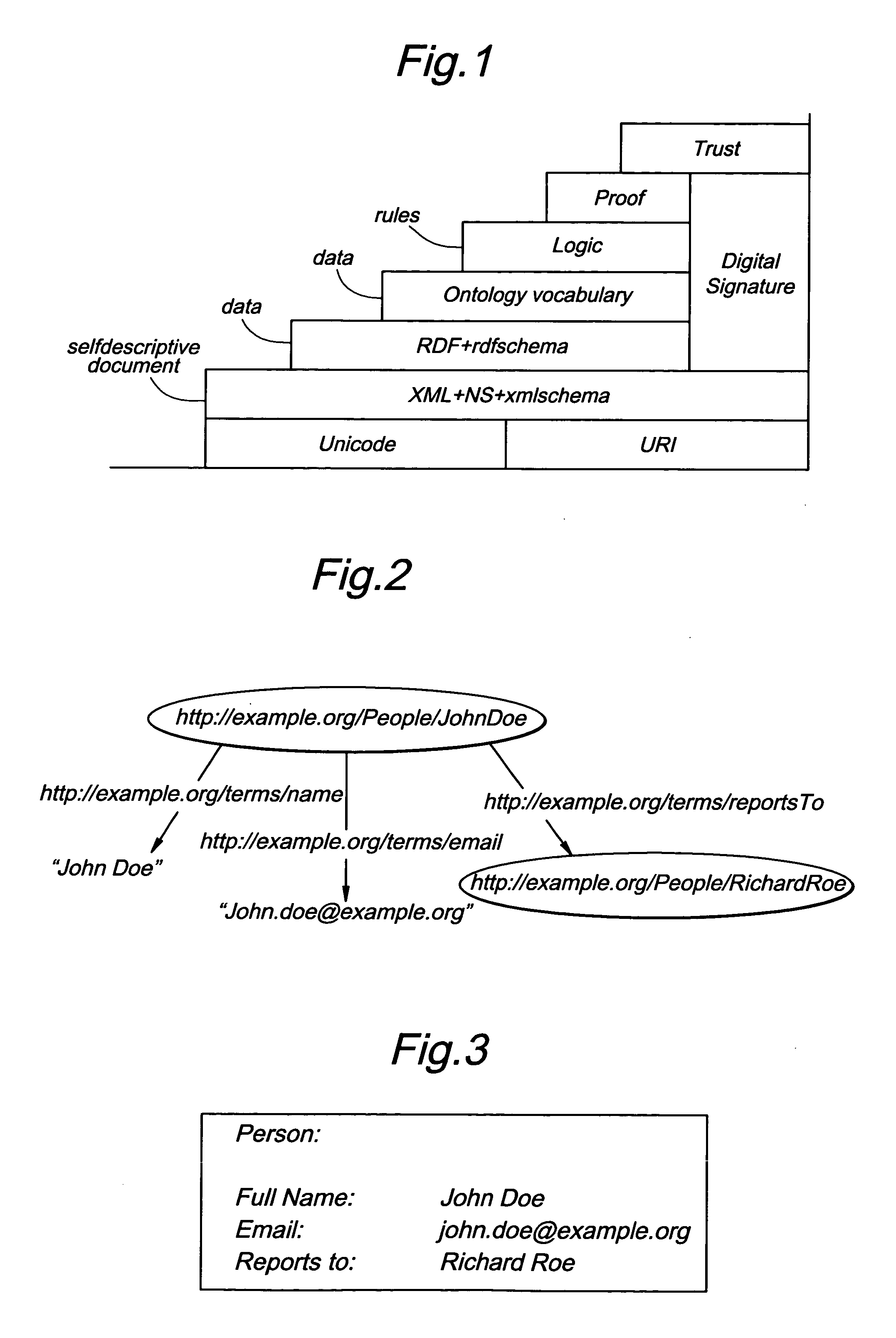System for semantically disambiguating text information
a text information and semantic technology, applied in the field of semantic user interface using a system for semantically disambiguating text information, can solve the problems of many limitations of xml as a language for describing concepts, the content written for human consumption is not readily understood by machines, and the content is written for human consumption. , to achieve the effect of simple “push-button publishing” and low barrier to entry
- Summary
- Abstract
- Description
- Claims
- Application Information
AI Technical Summary
Benefits of technology
Problems solved by technology
Method used
Image
Examples
Embodiment Construction
[0110] There can be a number of embodiments that are uniquely empowered though the use of such a user interface. The embodiments above have focused on primarily two kinds of applications. One where a digital asset is marked up with metadata through the use of the user interface (such as the semantic file system and semantic pub / sub). The other where the user interface is used to embed metadata into the digital asset itself such as smart tags. A further example of the former is semantic enabled searching. Document searching or Internet searches can be enriched with manual annotation that allows the document creator to highlight concepts within a document so as to allow search engines to find it better. Much of Information retrieval has focused on mechanisms that deal with raw text in a document as it was not considered practical to have users enter metadata. It is widely recognized that while such indexing based on text is useful, there exists a distinct requirement for a human media...
PUM
 Login to View More
Login to View More Abstract
Description
Claims
Application Information
 Login to View More
Login to View More - R&D
- Intellectual Property
- Life Sciences
- Materials
- Tech Scout
- Unparalleled Data Quality
- Higher Quality Content
- 60% Fewer Hallucinations
Browse by: Latest US Patents, China's latest patents, Technical Efficacy Thesaurus, Application Domain, Technology Topic, Popular Technical Reports.
© 2025 PatSnap. All rights reserved.Legal|Privacy policy|Modern Slavery Act Transparency Statement|Sitemap|About US| Contact US: help@patsnap.com



